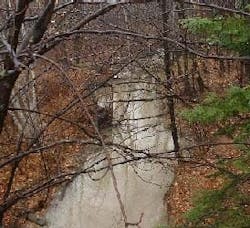Authorities Collaborate to Reduce Storm Water Pollution in Maine
Federal and state environmental authorities are enacting strong measures to reduce pollution problems caused by storm water runoff into a Portland, Maine-area stream suffering from the effects of storm water flowing from large impervious surfaces.
Specifically, the U.S. Environmental Protection Agency (EPA) and the Maine Department of Environmental Protection (DEP) have announced a targeted effort to apply more stringent controls on polluted storm water discharging into Long Creek, a freshwater stream that flows into Clark’s Pond, the Fore River and eventually Casco Bay. Long Creek (above Clark’s Pond) drains a watershed area just under 3.5 sq miles, located primarily in the cities of South Portland and Westbrook, with smaller portions in the town of Scarborough and the city of Portland.
The new environmental protections will require properties with more than one acre of impervious area to apply for a Clean Water Act permit for storm water discharges to Long Creek. The permits will require that these properties reduce pollution by allowing storm water to percolate into soils by conducting more frequent and thorough street sweeping, by being more careful in storing polluting materials (i.e., oils and paints) on their property or by conducting other storm water management and stream restoration activities. Many of the impervious surfaces causing polluted storm water runoff are the result of relatively recent development.
“Polluted storm water runoff causes serious water quality problems because significant amounts of pollutants can be carried from roads, parking lots and roofs directly to rivers, streams and lakes,” said Robert Varney, regional administrator of EPA’s New England office. “By working closely with the Maine DEP, we will help restore ecological health to Long Creek. We also intend to allow facilities to have flexibility and time to meet the new standards.”
Maine DEP Commissioner David Littell noted that in addition to the state and federal focus on the problem, local officials and businesses have been working for some time to develop a plan to address it collaboratively.
"South Portland has been a municipal leader in successfully resolving environmental challenges," he said. "Continuing that leadership, South Portland's officials and business leaders have been working with state representatives and environmental groups on a plan to restore the health of this ecosystem, which coexists next to our state's largest retail shopping area. The forward-thinking municipal and business leaders in South Portland, Portland, Westbrook and Scarborough have developed the Long Creek Restoration Plan to get this effort moving."
Since 2007, the development of the plan has included active participation by businesses, the other communities, the Maine Department of Transportation, the Maine Turnpike Authority and private landowners. The effort has been supported by Maine DEP and the EPA.
"Storm water has become a leading source of water pollution in New England," said Steve Hinchman, attorney for the Conservation Law Foundation, which petitioned the EPA to require permits limiting polluted discharges into Long Creek. "Left unchecked, polluted storm water could destroy the bays and beaches that are the jewels of the Maine Coast. We commend EPA, Maine DEP and community and business leaders for addressing the problem, and we are committed to working with them to restore Long Creek and areas downstream, including the Fore River and Casco Bay."
This action follows a similar EPA decision on Nov. 11 to require permits of storm water discharges from large impervious surfaces in the upper Charles River watershed in Massachusetts, based on extensive studies showing that storm water was fueling the growth of excess plant life, including toxic algae, in the Charles River.
Source: U.S. EPA


